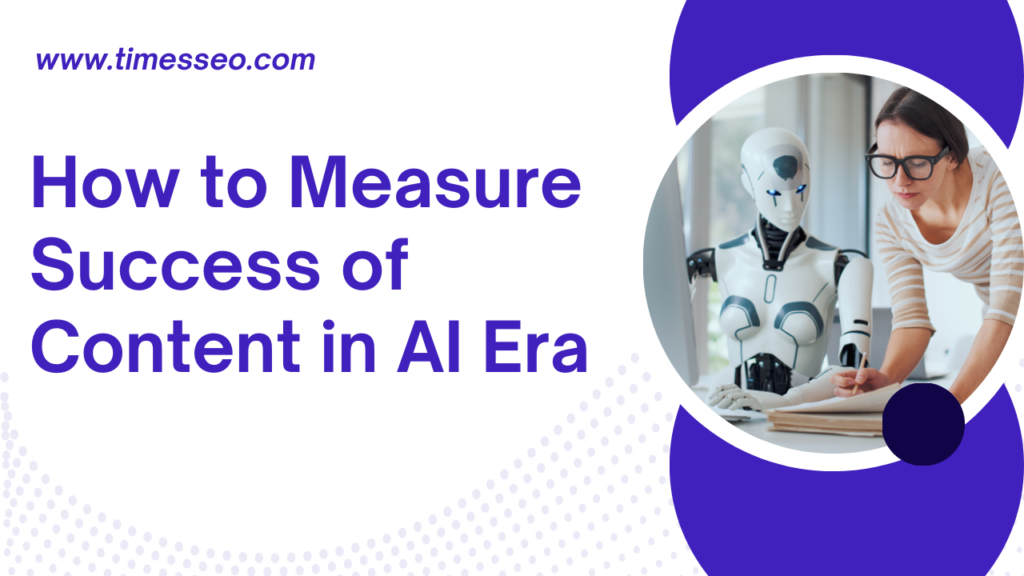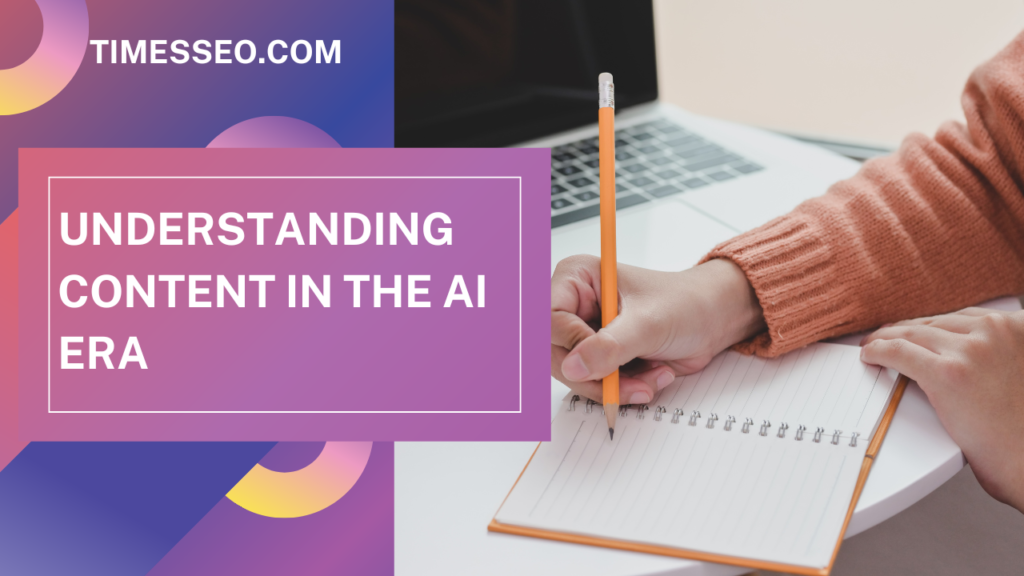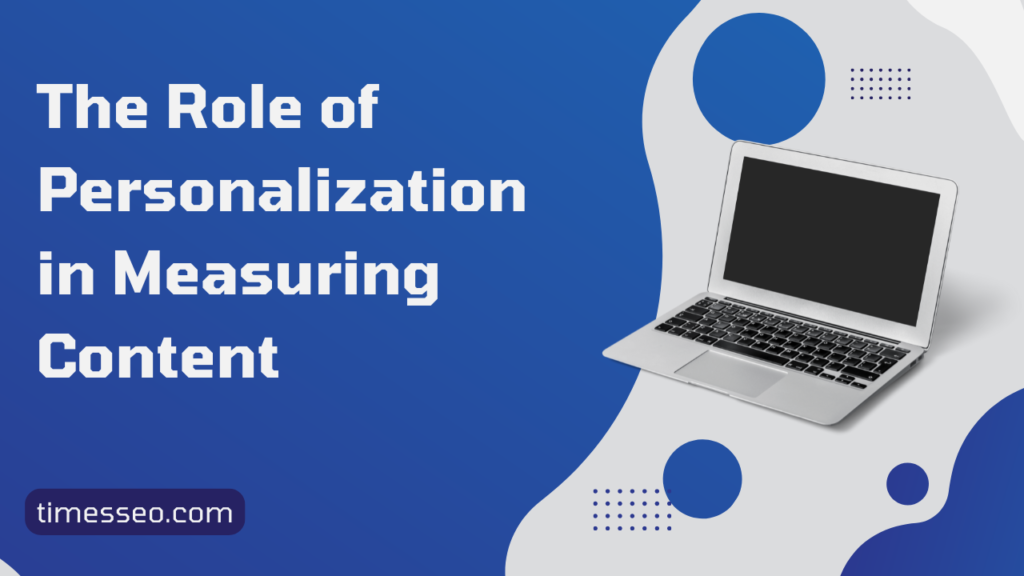
How to Measure Success of Content in AI Era
Discover effective strategies to measure the success of content in AI era, from AI-powered analytics to personalized engagement metrics, ensuring real business impact.
Table of Contents
Introduction
Measuring the success of content has never been simple, but in the AI era, the game has completely changed. Gone are the days when marketers could point to page views, likes, or shares as proof of performance. Today, businesses need to know: Did this content actually move the needle? Did it drive conversions? Did it create meaningful engagement?
With AI, we’re not just tracking numbers—we’re uncovering patterns, behaviors, and predictive insights that help us refine strategies. So, how do we measure success in this new landscape? Let’s dive in.
Understanding Content in the AI Era
About the Content in the AI Era: What is it?
In the AI era, content is more than just eye-catching videos or words on a page. It’s data-driven, personalized, and adaptive. AI enables marketers to create tailored experiences for different audiences while analyzing performance with far greater precision.
AI helps marketers know what works and what doesn’t in real time, eliminating the need for guesswork.
The Limitations of Traditional Metrics
Let’s be honest—metrics like page views, clicks, and impressions used to be enough. But now, they tell only part of the story. For example, 10,000 views on a blog post may look great, but what if only 1% of readers engaged or converted?
Vanity metrics can mislead brands into thinking content is successful when in reality, it may not be delivering business value.
Defining Success in AI-Driven Content
Success looks different for every brand. For some, it’s about lead generation, for others it’s brand awareness or customer retention.
Aligning content measurements with business objectives is essential for defining success in the AI era. Achieving results that promote growth is more important than chasing numbers.
AI-Powered Analytics: A Game Changer
AI flips the script. With predictive analytics, marketers can forecast how content will perform before fully launching it. If a campaign isn’t working, they may swiftly change course thanks to real-time monitoring.
Imagine having a dashboard that not only tells you how many people viewed your content but also why they engaged and what they’re likely to do next. That’s the power of AI.
Key Metrics Agencies and Brands Should Track
AI broadens the scope of significant metrics, including:
- Engagement Rate: Time spent, scroll depth, repeat visits.
- Conversion Rate: Leads generated, purchases, sign-ups.
- Customer Journey Insights: How content influences each stage of the funnel.
These measurements provide insight into not only what occurred but also why
Sentiment Analysis and Audience Feedback
Numbers don’t always tell the full story. AI can analyze tone, sentiment, and audience feedback across platforms to see how people feel about content.
For example, 1,000 positive mentions may be worth far more than 10,000 neutral ones. Assessing brand impression helps agencies feel more successful.
The Role of Personalization in Measuring Content
AI thrives on personalization. It can track user journeys at scale, providing insights like:
- Which kind of material appeals to each audience segment?
- How personalized CTAs affect conversions
- Which demographics engage the longest
By analyzing these factors, agencies can measure the impact of personalized experiences—something traditional analytics can’t capture effectively.
Content Performance Across Different Formats
Content today comes in many forms—blogs, videos, podcasts, interactive experiences. AI allows agencies to measure performance across all of them, identifying:
- Which formats drive the most conversions
- Which channels deliver the highest ROI
- How audiences engage differently on each platform
This helps marketers fine-tune their strategies.
ROI and Revenue Attribution in AI Era
Ultimately, customers want outcomes. AI helps with revenue attribution modeling, connecting the dots between content and actual sales.
Instead of guessing which touchpoint led to a purchase, AI maps the entire journey—proving that content efforts directly impact revenue.
Using Predictive Metrics for Future Strategy
AI not only examines past data but also predicts future trends. By spotting trends early, marketers can create strategies that stay ahead of the competition.
For example, AI might predict that a rising keyword will dominate search next month, helping agencies prepare content ahead of time.
Future of Content Success Measurement
The future looks promising. We’ll see more voice search analytics, AI-powered storytelling insights, and even AR/VR performance tracking.
Marketers who embrace these tools will be prepared for the next evolution of content marketing.
Conclusion
Measuring content success in the AI era requires moving beyond vanity metrics. It’s about aligning goals with outcomes, leveraging predictive analytics, and blending AI efficiency with human creativity. Agencies that adapt will not only measure success more accurately but also drive better results for clients.
Frequently Asked Questions
Engagement rate, conversion rate, customer journey insights, and sentiment analysis are key metrics.
AI connects content performance to revenue through advanced attribution models, showing real business impact.
No, AI enhances data analysis, but human interpretation is vital for context and strategy.
Yes, many affordable AI tools provide valuable insights even for smaller companies.
Expect more advanced personalization, predictive insights, and measurement tools for immersive content formats.
Table of Contents
Popular Posts
-
 Affordable Technical SEO Audit for Small Business: A Complete Guide26 Jun 2025 Blog
Affordable Technical SEO Audit for Small Business: A Complete Guide26 Jun 2025 Blog -
 How to Get an Affordable Technical SEO Audit for Small Business27 Jun 2025 Blog
How to Get an Affordable Technical SEO Audit for Small Business27 Jun 2025 Blog -
 The Ultimate Local SEO Audit Checklist for Startups28 Jun 2025 Blog
The Ultimate Local SEO Audit Checklist for Startups28 Jun 2025 Blog -
 Local SEO Audit Checklist for Startups: A Beginner’s Guide28 Jun 2025 Blog
Local SEO Audit Checklist for Startups: A Beginner’s Guide28 Jun 2025 Blog -
 Top On-Page SEO Audit Steps for Service Websites Every Business Should Know29 Jun 2025 Blog
Top On-Page SEO Audit Steps for Service Websites Every Business Should Know29 Jun 2025 Blog -
 Technical SEO for WordPress: The Ultimate Beginner’s Guide01 Jul 2025 Blog
Technical SEO for WordPress: The Ultimate Beginner’s Guide01 Jul 2025 Blog -
 The Impact of On-Page SEO Audit Steps for Service Websites on UX01 Jul 2025 Blog
The Impact of On-Page SEO Audit Steps for Service Websites on UX01 Jul 2025 Blog -
 Technical Mobile SEO Audit Tips for Developers02 Jul 2025 Blog
Technical Mobile SEO Audit Tips for Developers02 Jul 2025 Blog -
 Complete SEO Backlink Audit Guide for Better Google Rankings03 Jul 2025 Blog
Complete SEO Backlink Audit Guide for Better Google Rankings03 Jul 2025 Blog -
 Boost Your Rankings with Technical SEO for WordPress01 Jul 2025 Blog
Boost Your Rankings with Technical SEO for WordPress01 Jul 2025 Blog






